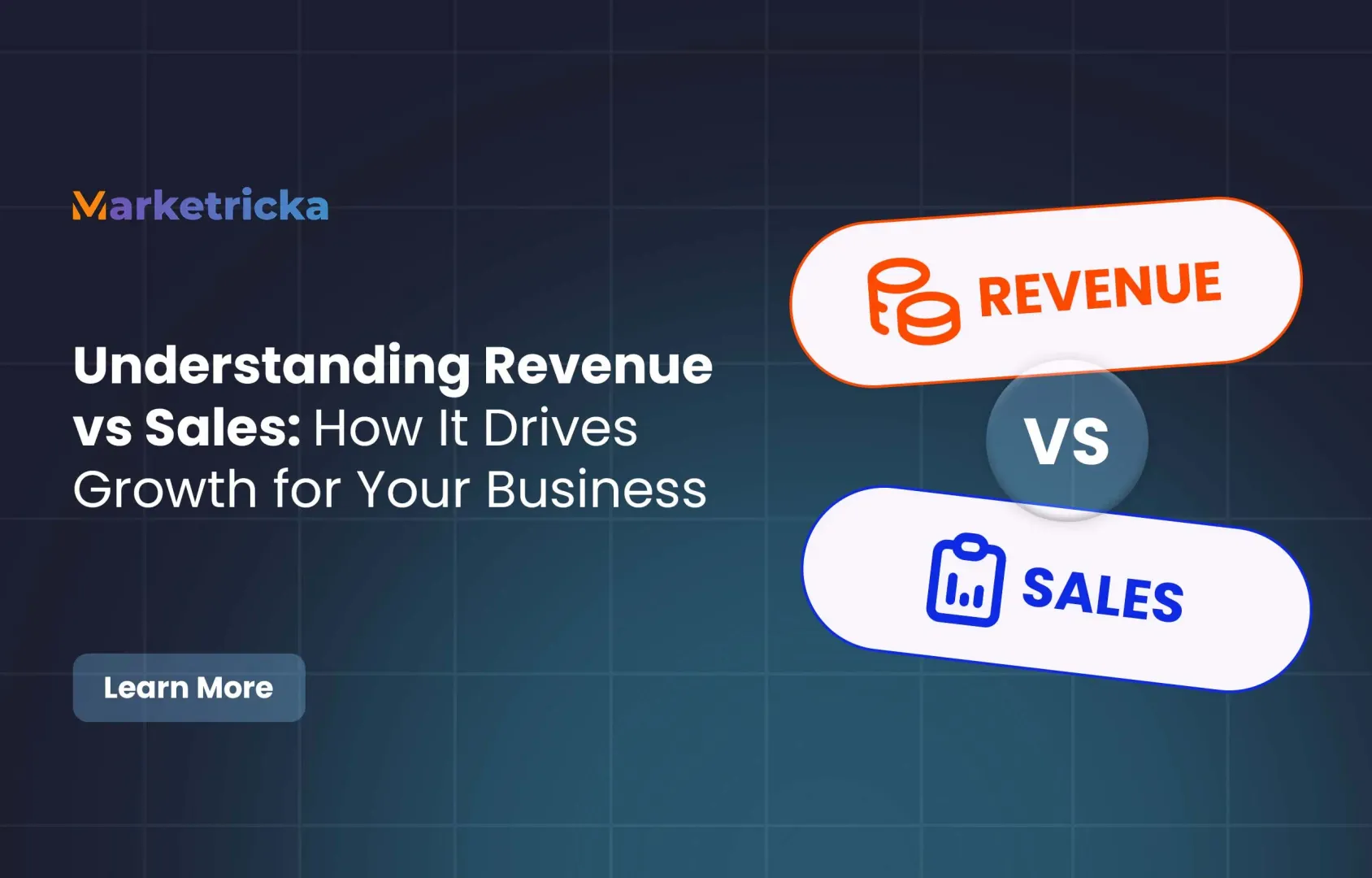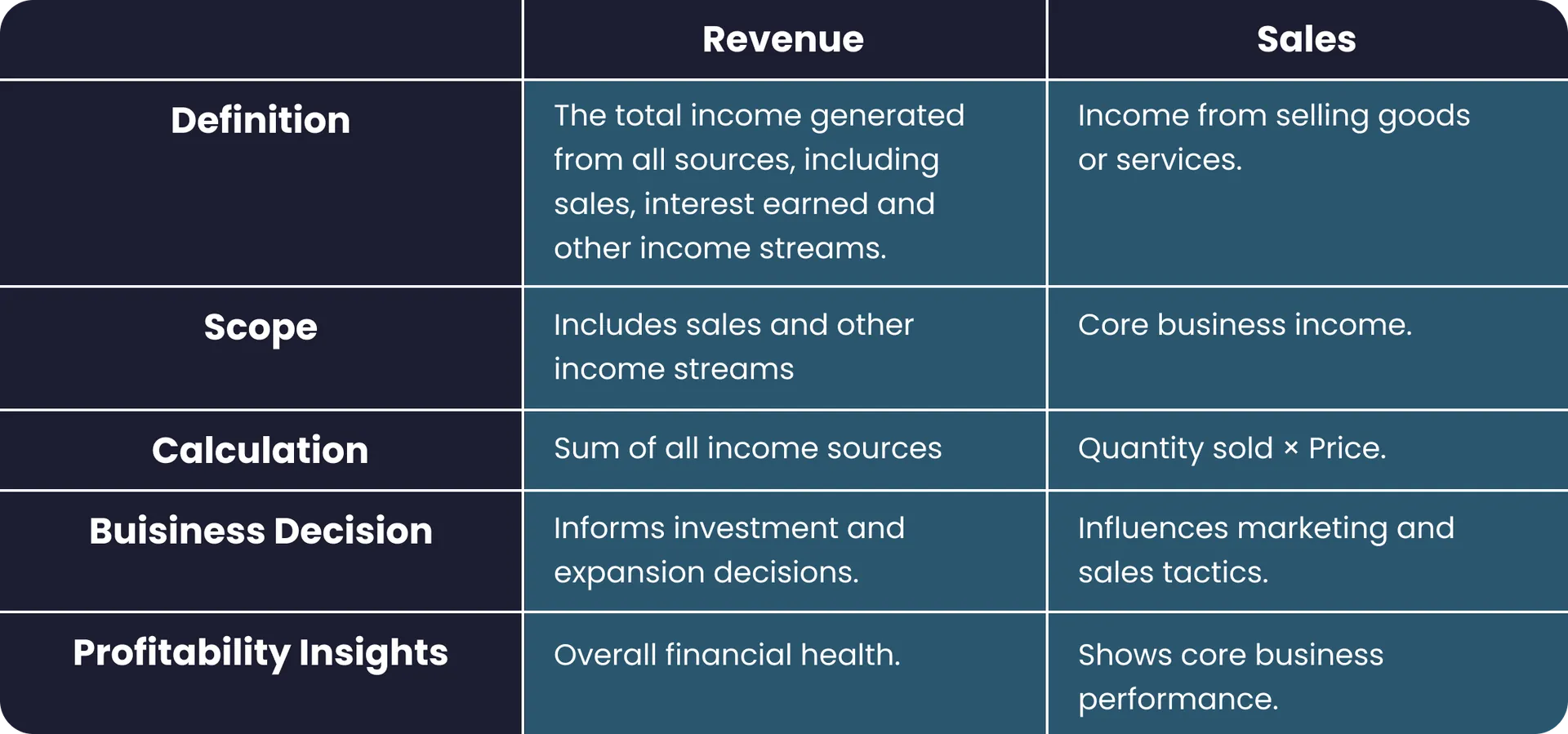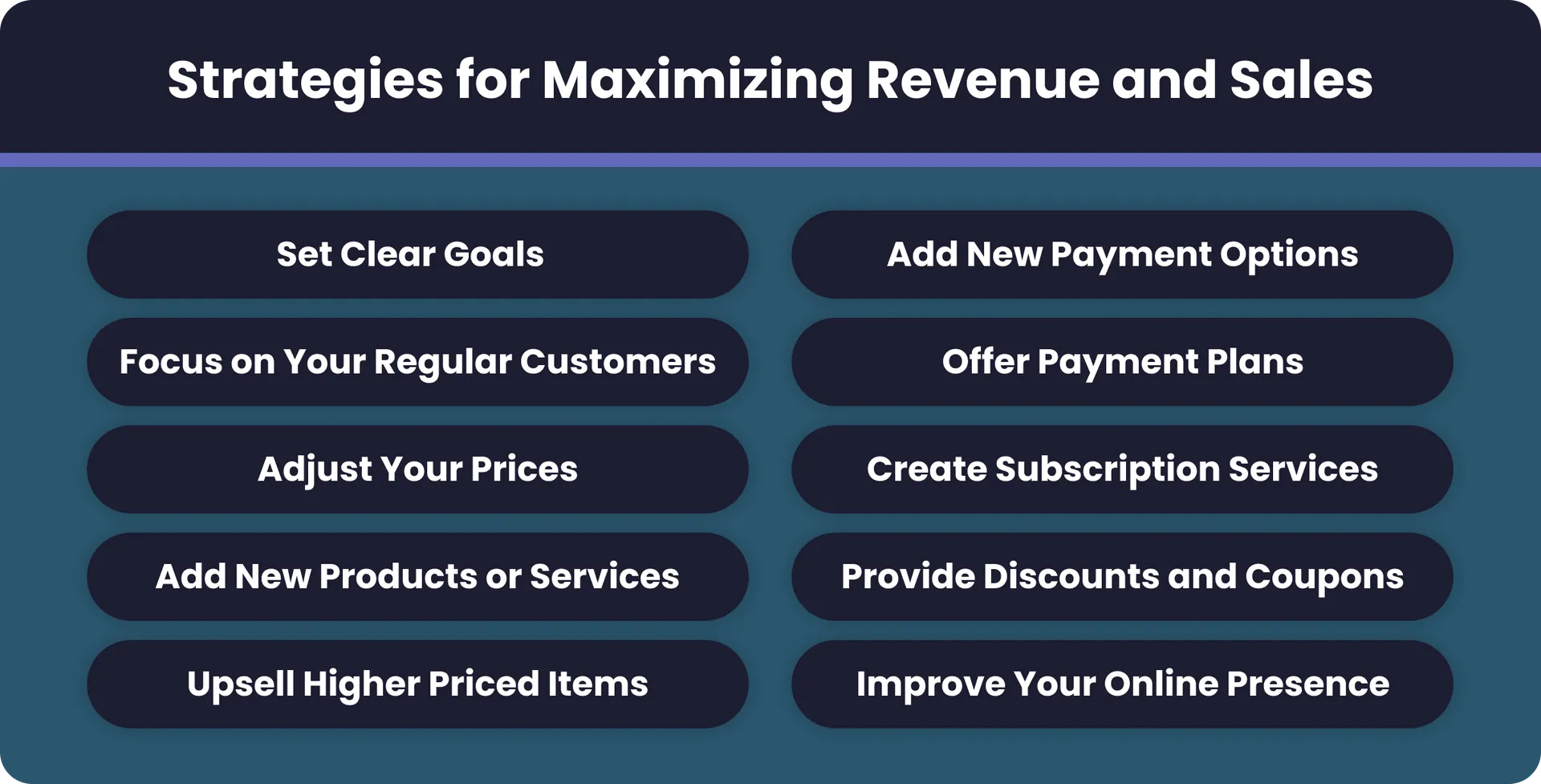Understanding Revenue vs Sales: How It Drives Growth for Your Business?
In this detailed analysis, we’ll break down the contrasts between sales and revenue, giving business owners the knowledge and tools to navigate finances confidently. Whether you’re experienced or new to business, understanding sales basics and revenue is essential for guiding your company toward success in today’s ever-changing market.

Summary :
Understanding the difference between sales and revenue is crucial for business growth and smart decision-making. But what exactly makes them different and why does it matter for your business’s success?
Exploring the details of revenue vs. sales reveals important financial insights that can boost profits and efficiency. With this knowledge, businesses can improve their financial strategies, spot areas to enhance, and plan for long-term success.
In this detailed analysis, we’ll break down the contrasts between sales and revenue, giving business owners the knowledge and tools to navigate finances confidently. Whether you’re experienced or new to business, understanding sales basics and revenue is essential for guiding your company toward success in today’s ever-changing market.
What is Sales?
Sales refers to the process of exchanging goods, services or products for money or other forms of compensation. It involves activities such as identifying potential customers, understanding their needs, presenting products or services and their negotiating terms. The goal of sales is to generate revenue for a business by satisfying the needs or solving the problems of customers through the offerings provided. It’s essentially about building relationships, addressing customer needs and facilitating transactions to drive business growth.
When we talk about sales, we often mention these terms:
Gross sales: This is the total amount of money you earn from selling products or services in a specific time like a year.
For example : If a software company sells 10 yearly licenses for $1 million each, that’s $10 million in gross sales for the year.
Net sales: This is the money you earn from sales after subtracting the costs of making or buying the products you sold.
For example : If the software company had $2 million in costs, the net sales for the year would be $8 million.
What is Revenue?
Revenue includes money from selling your products or services, as well as any other income, like profits from investments. Your business uses this money to pay for things like buying equipment or paying employees.
These are different types of revenue you might see on your business’s financial statements:
1) Gross Revenue
This is the total amount of money you get from selling your products or services. For example, if you earned $200,000 from ongoing subscriptions and sold an additional $100,000 in new products, your gross revenue for the month would be $300,000.
2) Net Revenue
This is your gross revenue minus all the costs of running your business, like production and marketing expenses. For instance, if you spent $70,000 to run your business in a month, your net revenue would be $300,000 – $70,000, which is $230,000.
3) Non-Operating Revenue
Sometimes, businesses make money from other sources besides their main products or services. This could be things like grants, dividends, or selling assets like buildings. For example, if a tech company sells a building, the money they make from that sale is considered non-operating revenue because it’s not from their usual business operations.
Understanding Revenue vs Sales: What Makes Them Different?
When it comes to running a successful business, understanding the distinction between sales and revenue is crucial. While these terms are often used interchangeably, they represent different aspects of your company’s financial performance.
Sales and revenue might seem similar, but they’re not quite the same. Sales are just the money you make from selling your stuff, like products or services. But revenue includes all the money your business earns, not just from sales, but also from other things like selling stocks or equipment.
On the other hand, revenue encompasses all the income generated by your business, not just from sales. Revenue includes income from various sources such as sales of goods or services, interest earned, royalties, and other forms of income. In essence, revenue is the total amount of money your business earns before deducting expenses.
Revenue and Sales : Key Differences

Role of Revenue and Sales in Business Growth
Revenue and sales play crucial roles in driving business growth.
Sales: The Foundation of Growth
Sales are the direct transactions where your products or services are exchanged for money. They are important because :
Increase Market Share: More sales mean you are capturing more of the market.
Build Customer Relationships: Selling directly to customers helps build strong, loyal relationships.
Boost Cash Flow: More sales bring in more money quickly, which is essential for daily operations.
Revenue
Revenue encompasses all income streams, including sales, investments, and other business activities. It’s a broader measure of a company’s financial health and growth potential. Key aspects of revenue’s role include:
Ensure Stability: Regular revenue ensures the business can continue operating smoothly and invest in growth.
Attract Investors: Higher revenue makes your business attractive to investors, providing funds for expansion.
Improve Efficiency: Knowing where your revenue comes from helps you make better decisions and cut unnecessary costs.
Together, sales and revenue are crucial for business growth. Sales drive immediate cash flow, while revenue shows overall financial health and long-term potential.
Strategies for Maximizing Revenue and Sales

Set Clear Goals
Decide how much you want to increase your sales and revenue. Having clear, measurable goals helps you stay focused and motivated.
Focus on Your Regular Customers
Build strong relationships with your regular customers. Keep in touch through emails or texts to remind them about your store and new products.
Adjust Your Prices
Review your pricing strategy. You might sell more by lowering prices or increase revenue by raising prices if your brand is trusted.
Add New Products or Services
Offer additional products that go well with your main items. For example : If you sell a Pen then offer or add a diary / notebook.
Upsell Higher Priced Items
Promote more expensive products by showing their benefits. Displays and information can help customers see the value in upgrading.
Add New Payment Options
Make it easier for customers to pay by offering more payment methods like credit cards, cash apps, or secure quick pay options.
Offer Payment Plans
Provide installment plans for expensive items. This allows customers to pay in smaller amounts over time.
Create Subscription Services
Offer a subscription for regular purchases. Give discounts for subscribing, ensuring steady sales and helping customers save money.
Provide Discounts and Coupons
Use promotions like discounts and coupons to attract new customers and encourage repeat purchases.
Improve Your Online Presence
Optimize your website to boost sales. Focus on search terms and design elements that drive sales, and keep your content updated.
By following these simple strategies, you can effectively increase your revenue and sales, helping your business grow and succeed.
Key Metrics for Revenue and Sales
Revenue Metrics
1) Total Revenue:
The total amount of money generated by the business from all sources.
2) Revenue Growth Rate:
The percentage increase or decrease in revenue over a specified period.
3) Average Revenue Per User:
The average amount of revenue generated per customer or user.
4) Customer Lifetime Value :
The total revenue a customer is expected to generate over their entire relationship with the business.
5 ) Revenue by Product/Service:
The revenue generated by each individual product or service offered by the business.
6 ) Gross Profit Margin:
The percentage of revenue that represents the company’s profit after accounting for the cost of goods sold.
Sales Metrics
1) Total Sales:
The total number of products or services sold during a specific period.
2) Sales Growth Rate:
The percentage increase or decrease in sales over a specified period.
3) Conversion Rate:
The percentage of leads or prospects that convert into paying customers.
4) Average Order Value:
The average amount of money spent by customers in a single transaction.
5) Sales by Channel:
The distribution of sales across different sales channels, such as online, offline, or through specific marketing channels.
Technology in Sales and Revenue Generation
In today’s digital world, technology is like a strong wind that helps sales and revenue grow faster and more efficiently.
Real-Time Insights with Customer Relationship Management Systems
Customer Relationship Management Systems are like high lookout points, giving businesses a clear view of what customers are doing. They provide helpful insights that help businesses adjust sales strategies to better fit customer needs.
Predictive Power of AI Analytics
AI-driven analytics act like guides showing businesses the best way forward. They predict sales trends, helping companies stay ahead of what’s happening in the market.
Boosting Revenue
Using new technology can really help businesses make more money. It’s a key tool for companies that want to do well in today’s competitive market.
Revolutionizing Sales Contributions
Technology is changing how sales impact overall revenue. It makes sales processes smoother and helps businesses connect better with customers which leads to more money coming in.
Conclusion
In conclusion, revenue and sales are the backbone of any business driving growth, sustainability, and success. By understanding the importance of revenue and sales, businesses can optimize their strategies, capitalize on emerging trends and navigate challenges effectively.
In today’s digital landscape, technology plays an important role in transforming sales and revenue generation processes. From Customer Relationship Management Systems providing real-time insights to AI-driven analytics predicting market trends, businesses have access to powerful tools that enable smarter decision-making and enhanced customer experiences.
The integration of these technologies leads to more efficient sales processes, better customer engagement and ultimately, increased revenue. CRM systems help businesses build stronger relationships with their customers by providing a comprehensive view of their interactions and needs. Whereas, AI analytics offer actionable insights that can drive strategic decision-making and optimize marketing efforts.
By prioritizing both sales and revenue, leveraging advanced technologies and focusing on delivering exceptional value to customers, businesses can position themselves for sustained growth and success. Embracing these practices will enable companies to unlock new opportunities, strengthen customer loyalty and achieve their long-term financial goals.